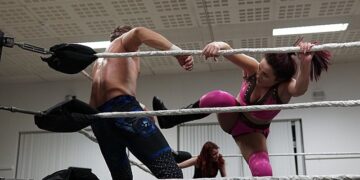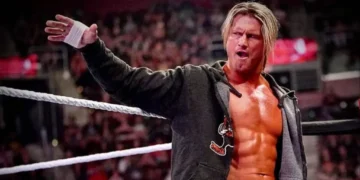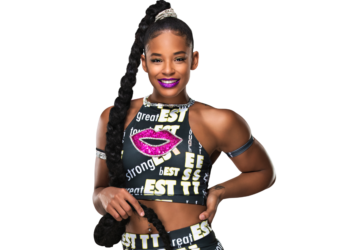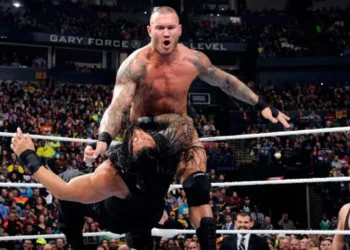Key Takeaways:
- Bleaching hair is a common practice among wrestlers.
- Wrestlers bleach their hair for various reasons, including aesthetics and intimidation.
- Bleaching hair can cause damage if not done correctly, leading to weakened and brittle hair.
- Wrestlers often need to take extra care of their bleached hair to maintain its health and appearance.
Are you ready to unleash your inner wrestler?
One of the iconic trademarks of professional wrestlers is their bleach-blond hair, a striking look that exudes power and confidence.
But how do they achieve that vibrant color?
In this blog article, we’ll dive into the world of wrestlers and their hair, exploring the step-by-step process of bleaching your hair to achieve that signature look.
We’ll also discuss important considerations, such as potential risks and precautions, as well as alternative options for those who prefer not to bleach their hair.
So, grab a chair and get ready for a hair-raising journey into the world of wrestlers and their bleached locks.
| Wrestler | Hair Color | Reason |
| Sting | Blonde | He wanted to standout and create a unique persona. |
| Randy Orton | Blonde | To enhance his “Legend Killer” character. |
| Charlotte Flair | Blonde/Platinum | To pay homage to her Hall of Fame father, Ric Flair. |
| Jeff Hardy | Various colors | To express his artistic and rebellious personality. |
How to bleach your hair like a wrestler
Get the vibrant and bold look of a wrestler by bleaching your hair with these simple steps.
Important considerations before bleaching your hair
Before bleaching your hair, it’s important to consider a few things. Firstly, assess the condition of your hair.
If it’s already damaged, bleaching may worsen the situation.
Secondly, do a patch test to check for possible allergic reactions. Thirdly, consider the maintenance required.
Bleached hair needs extra care and regular touch-ups.
Lastly, consult a professional stylist if you’re unsure about the process. Remember, proper preparation and expert advice are key when bleaching your hair.
Step-by-step instructions for bleaching your hair
To bleach your hair, start by mixing the bleach powder and developer according to the instructions provided.
Make sure to wear gloves to protect your hands.
Apply the bleach mixture evenly to your hair, starting from the ends and working your way up to the roots.
Avoid applying bleach directly to your scalp.
Leave the bleach on for the recommended time, checking for lightening progress.
Rinse out the bleach thoroughly and apply a toner to minimize any brassy tones.
Remember to deep condition your hair afterwards to restore moisture and minimize damage.
Caring for bleached hair
Caring for bleached hair is essential to maintain its health and prevent damage. Here are a few tips to keep in mind:
- Use a sulfate-free shampoo and conditioner designed for color-treated hair. This helps to preserve the color and prevent further drying out of the hair.
- Deep condition regularly to restore moisture and nourish the hair. Look for products specifically formulated for damaged or bleached hair.
- Minimize heat styling and avoid excessive brushing or combing, as bleached hair tends to be more fragile. When you do use heat tools, use a heat protectant spray.
- Protect your hair from the sun by wearing a hat or using hair products with UV filters. Sun exposure can cause further damage and fading of your color.
- Avoid chlorine and saltwater, as they can strip the hair of moisture and cause color fading. If you do swim, rinse your hair thoroughly afterward.
- Trim your hair regularly to get rid of split ends and prevent further breakage. This will also help your hair look healthier and more vibrant.
Risks and precautions of bleaching hair
Bleaching hair comes with potential risks to your hair and scalp, as well as the possibility of allergic reactions and skin sensitivity. It’s important to take precautions and maintain hair health post-bleaching.
Potential damage to hair and scalp
The process of bleaching hair can potentially cause damage to both the hair and scalp.
Bleaching chemicals, such as hydrogen peroxide, can strip the hair of its natural moisture and oils, leaving it dry, brittle, and prone to breakage.
Additionally, the scalp may become irritated and sensitive due to the harsh chemicals used in the bleaching process.
It is important to keep the hair and scalp well-nourished and hydrated before and after bleaching to minimize the risk of damage.
Regular deep conditioning treatments and avoiding excessive heat styling can help maintain the health of the hair and scalp.
Allergic reactions and skin sensitivity
Allergic reactions and skin sensitivity are potential risks of bleaching hair. Some people may experience mild symptoms like itching, redness, or a burning sensation.
However, others may develop severe reactions such as swelling, blistering, or hives.
It’s important to perform a patch test before bleaching to check for sensitivity. If you have a history of allergies or sensitive skin, it’s best to consult with a professional before attempting to bleach your hair.
Being aware of these risks and taking necessary precautions is key to maintaining your hair and skin health.
Maintaining hair health after bleaching
After bleaching your hair, it’s important to take steps to maintain its health.
Here’s how:
- Moisturize regularly: Bleaching can make your hair dry and prone to breakage. Use a hydrating conditioner or hair mask at least once a week to keep your strands moisturized.
- Avoid heat styling: Excessive heat can further damage bleached hair. Minimize the use of heat styling tools like flat irons and curling wands. If you need to style your hair, use a heat protectant spray beforehand.
- Trim regularly: Bleached hair is more susceptible to split ends. Regular trims every 6-8 weeks will help prevent split ends from traveling up the hair shaft and causing more damage.
- Protect from the sun: The sun’s UV rays can fade and weaken bleached hair. Protect your strands by wearing a hat or using hair products with UV protection when spending time outdoors.
- Use a wide-tooth comb: Wet bleached hair is more fragile and prone to breakage. Avoid brushing it when wet and use a wide-tooth comb to gently detangle any knots.
By implementing these practices, you can help maintain the health and vitality of your hair even after bleaching.
Alternatives to bleaching hair
Instead of bleaching your hair, you can try temporary hair dyes and sprays for a temporary color change.
Temporary hair dyes and sprays
Temporary hair dyes and sprays are great options if you want to change your hair color without the commitment.
These products allow you to experiment with different shades and styles.
They come in various colors, from natural tones to vibrant hues.
Temporary hair dyes and sprays are easy to apply and wash out, making them a convenient choice.
They can be used for special occasions or to switch up your look temporarily.
Just make sure to follow the instructions and test the product on a small section of hair before fully applying.
Hair extensions and wigs
Hair extensions and wigs are great alternatives to bleaching your hair.
They allow you to change your hairstyle and color without damaging your natural hair.
Hair extensions come in various lengths, styles, and colors, and can be easily clipped, taped, or sewn into your hair.
Wigs, on the other hand, cover your entire head and can be styled in different ways.
Both options are temporary and can be easily removed when you want to go back to your natural hair.
Hair chalking and colored hair gels
Hair chalking and colored hair gels are great alternatives to bleaching hair.
With hair chalking, you simply rub colored chalk onto your hair strands for a temporary and vibrant look.
Colored hair gels, on the other hand, allow you to achieve a similar effect by applying a gel that dries and adds color to your hair.
Both options are non-permanent and can be washed out easily, making them a fun way to experiment with different hair colors without the commitment.
Frequently Asked Questions
How long does bleached hair last?
Bleached hair typically lasts for about 4 to 6 weeks before it starts to grow out and show the natural color at the roots. However, the duration can vary depending on factors like hair growth rate and how well you take care of your hair.
To make your bleached hair last longer, use gentle shampoos, avoid heat styling, and protect it from excessive sun exposure.
It’s also important to stay on top of root touch-ups to maintain a consistent look.
Can bleached hair be dyed back to its original color?
Yes, bleached hair can be dyed back to its original color.
However, it is important to note that dyeing bleached hair can be challenging, as the hair’s structure has been altered by the bleaching process.
The hair may have become porous and more prone to absorbing color differently.
It is advisable to consult a professional hairstylist to ensure the best results and minimize potential damage.
They can recommend appropriate products and techniques to help you achieve your desired color.
How often should I touch up my bleached hair?
When it comes to touch-ups for your bleached hair, it’s important to keep an eye on your roots.
Typically, you’ll want to touch up your hair every 4-6 weeks to maintain a consistent look.
However, everyone’s hair grows at a different rate, so it’s best to pay attention to your own hair’s growth and adjust accordingly.
Remember to use a gentle bleach and follow the instructions carefully to avoid damaging your hair.
Don’t forget to deep condition regularly to keep your hair healthy and strong!
Can I bleach my hair at home?
Yes, you can bleach your hair at home.
However, it’s important to proceed with caution and follow the proper steps to avoid damaging your hair.
Here are a few tips to keep in mind:
- Choose the right bleach: Opt for a high-quality bleach specifically made for hair. Avoid using household bleach or bleach meant for other purposes.
- Read and follow the instructions: Carefully read the instructions provided with the bleach kit. Follow them precisely to ensure you achieve the desired results and minimize damage.
- Conduct a patch test: Before applying the bleach on your entire head, conduct a patch test on a small section of your hair to check for allergic reactions or adverse effects.
- Protect your skin and clothing: Apply a thin layer of petroleum jelly along your hairline and wear gloves to protect your skin from the bleach. Use an old towel or cape to shield your clothing.
- Time it correctly: Leave the bleach on your hair for the recommended amount of time. Check your hair frequently to monitor the lightening progress.
- Deep condition afterwards: After bleaching, your hair will likely need some extra care and hydration. Use a deep conditioning treatment to help restore moisture and prevent damage.
Remember, if you’re unsure about bleaching your hair at home, it’s always best to consult a professional hairstylist to ensure the process is done safely and effectively.
What professional products are recommended for bleaching hair?
When it comes to bleaching hair, there are several professional products that are highly recommended.
These include:
- Powder bleach: This is a popular choice for bleaching as it can lift the hair color effectively. Make sure to choose a high-quality powder bleach for best results.
- Developer: A developer is used to activate the bleach and lighten the hair color. Opt for a developer with the right volume, depending on the desired level of lift.
- Toner: After bleaching, a toner helps to counteract any unwanted brassiness and create a more desired shade. Look for a toner specifically formulated for bleached hair.
- Deep conditioner: Bleaching can be harsh on the hair, so a deep conditioner is recommended to restore moisture and keep the hair healthy.
Remember to always read and follow the instructions provided with these professional products to ensure safe and effective results.
Is it necessary to bleach hair before using vibrant hair colors?
No, it is not necessary to bleach your hair before using vibrant hair colors. While bleaching can help achieve a more vibrant and intense result, it is not a requirement.
If your hair is already light enough or if the color you want to use is intense enough, you can skip the bleaching step.
However, keep in mind that the final result may vary depending on the starting color of your hair.
Final Verdict
Bleaching your hair like a wrestler can be a fun and bold choice, but it is important to carefully consider the potential risks and precautions involved. By following the step-by-step instructions and properly caring for your bleached hair, you can minimize damage and maintain its health.
However, it is crucial to remember that such treatments can have an impact on your hair and scalp, and allergic reactions may occur.
Additionally, there are alternative options to bleaching, such as temporary hair dyes and extensions, which can provide similar results without the potential damage. Overall, with the right knowledge and precautions, you can achieve the desired look while prioritizing the health of your hair.

































